|
This is a guest post from our friend Stephen Key of an article that appeared in Inc. Magazine on May 5, 2020. Keep in mind that "seeeding" your product via a Samplemax Onsert card to a target demographic or geography could be just the thing to spread the word about your NEW product!
Getting publicity is one way of creating more revenue from your product. A great public relations campaign can have a long-lasting impact on your brand's reputation and public image. It will also help you sell more product. So, whether you're licensing or venturing, learning how to get media attention is something every inventor should do.
There are many ways of getting publicity for your product. Today, one of the most effective is by going the distance to literally place it into the hands of media and influencers. This strategy is sometimes referred to as "product seeding," and it works. I've personally used product seeding to help me get national publicity for my inventions. For example, when I was running Hot Picks, a company that produced novelty guitar picks in the early 2000s, I used product seeding to get myself booked on CNBC's The Big Idea with Donny Deutsch. In the letter I mailed the show's producers, I included a handful of picks, knowing they would spill out and leave a lasting impression. I also used product seeding to get written up in music magazines like Guitar World and Revolver. This strategy isn't new, so why is it particularly effective right now? Because we're all so inundated with digital content -- whereas nothing compares to actually holding something in your hand, where you can touch, feel, see, and use it. That interaction is much more likely to pique someone's curiosity. More recently, I've been on the receiving end of successful product seeding campaigns because I interview inventors on my YouTube channel. For example, the other week I received a package from Anaheim, California-based puzzle company MicroPuzzles: a 150-piece mini puzzle packed in a test tube, along with a thank-you note. The package was custom-printed with my name on it and the product inside was nestled among eye-catching tissue paper. I was instantly enamored, and I wouldn't have felt the same way if I had just gotten an email. The most effective product seeding strategies are highly targeted yet subtle. When you begin making your hit list, focus on people whose audience can benefit from your product. Bigger isn't necessarily better. 1. Be intriguing. You need people to open your initial message for this strategy to work. (Mailing someone your product without touching base first is just spam.) So, don't overlook the importance of your subject line. For MicroPuzzles, the line that worked on LinkedIn was, "Here's a puzzle I bet you've never seen before." That's fun. 2. Keep your request short and simple. All you are doing is asking this person for permission to send them something. That's it. Don't sell. Focus on making it easy for them to say yes quickly. 3. Personalize each package you send. To the extent that you can, make the recipient feel special. This can be accomplished by a few genuine words of appreciation. Don't ask for anything in return, and don't make any demands. Above all else, be sincere in your approach. 4. Convey a sense of urgency. Attention is fleeting; the media moves fast. When you begin seeding your product out, make sure you are able and ready to respond to the responses you receive quickly -- like within 60 minutes. If you're too slow, they'll move on. Personally, hiring a publicist was never in the cards for me because they're expensive and there's no guarantee they'll be successful. So, if it's not in your budget either, that's okay -- as an inventor, you're well-suited to get your own publicity.
1 Comment
This is a guest post by Cindy Johnson. Cindy is a product sampling and promotions expert for CPG brands. Before starting Sampling Effectiveness Advisors in 2004, Cindy worked for P&G in Brand Marketing and as Corporate Sampling Programs Manager. Just three months ago, I deleted a white paper I had written in 2009 on the economy and its impact on sampling. I thought “we don’t need this anymore”. How quickly things change! I pulled the document out of the recycle bin and have updated it to provide more information: In 2009, more than 80% of consumers said the economy is their greatest source of stress (American Psychology Association). More than two-thirds were worried about maintaining their standard of living; a 30% increase in just a year! (PROMO Apr.2009) *. I fear we are in worse situation now than we were during the recession, since consumers are not only concerned about their bank accounts, but also fear for their lives. Psychologists say consumers can better handle the uncertainty and anxiety caused by uncertain times when they begin to take more control of their individual situations. While the impulse might be to put your head under the pillow, put your money under the mattress, and say “Wake me when it’s over”….the better course of action is to get a handle on decisions concerning finances and to keep spending under control by shopping with a list. It wasn’t too many years ago that marketing experts were quoting percentages as high as 80% for the percentage of shopping decisions made in-store. However, a study by IRI indicated most shopping decisions were being made at home for the bulk of US households (76%). With high unemployment, consumers can’t make as many impulse buying decisions in the store, like they had in past years. We are definitely in a new era of decision making! In 2009, The Food Marketing Institute survey reported 71% of respondents were eating out less often and cooking more at home as a result of the recession (Brand Week). Now with restaurants not being able to have customers inside, that number will be even higher in 2020! WordSpy defines the word “homedulgence” as “during a recession, the need for consumers to prefer home-based indulgences”. The move to homedulgence is one-way consumers can ride out a recession, and extend it to other areas of life, such as mix-your-own cocktails and home dining parties. Rather than spend $150 on a dinner for two at a five-star restaurant, consumers can spend less money to host a small dinner party for friends. Instead of spending $30 on fast-food to feed her family one meal, moms will use that same money to make three balanced-meals at home. According to 80% of shoppers in 2009, purchasing behavior was influenced by price. Promo Magazine (March 17, 2009) reported that 20% of consumers were buying more private label brands and that coupon redemptions grew 10% in the last quarter of 2008 - the first jump in redemptions since the early 90’s. CouponInfoNow.com reported that redemptions were also up 19% in the first quarter of 2009. While coupons aren’t quite as popular as they were ten years ago, we should expect this same type of behavior in 2020. In a nationwide poll of 431 women with children, 65% had said they had eliminated from their spending “anything I don’t feel is absolutely necessary for my lifestyle.” Only 12% told pollsters they hadn’t altered their household finances in any way. (PROMO magazine, Nov. 2008). Not only did consumers look for efficiencies with their grocery budgets, they looked for quality and healthy choices. Despite the economy, consumers did show a willingness to pay more for organic or natural products - per a study released by the Natural Marketing Institute and the Nielson Company. With so much interest in improving the body’s immune system, consumers will again be looking for healthy choices. The only way to feel any amount of control over this situation is to take charge of spending habits; this means making shopping lists, looking for value and quality, limiting the consumption of calories, eating at home, and making the most of the dollars available to them. Impulse buying will be impacted; shoppers will create online grocery lists for pickup at the retailer or are likely to have a list to get in and out of the store as fast as possible. Marketers can take much of the perceived risk out of new purchases by increasing product sampling (Promo Magazine). How does product sampling fit into this equation?First and foremost, no other marketing activity gives the consumer the actual brand experience or allows the consumer to make a purchase decision without a risk. Coupons are a preferred marketing tool during a recession (as evidenced by the increase in redemptions), but if the coupon is for a new product, most households aren’t in a position to risk a portion of their budget on a new item that might not be consumed. To get a new initiative off the ground in a slow economy, product sampling is critical to the success of the brand because it’s the only way to ensure trial. When consumer confidence is low (as it is now), brands should be willing to prove their product is great - by offering a free sample. What’s the best way to approach sampling planning in hard economic timesObviously targeting is essential to the success of a sampling campaign. And while targeting is one of the key decisions of a successful sampling campaign, if sampling doesn’t result in trial - the sampling campaign will not be successful. Marketers need to consider when and where to reach their target; otherwise the sample could be wasted. Beyond the basic sampling effectiveness principle of reaching the target when & where he/she is receptive, brand marketers must consider the economic climate, its impact on shopping behavior, and the consumer’s reluctance to risk much of the shopping budget. Brands also need to be aware that consumers are planning grocery shopping trips in advance and that there will be a renewed interest in “homedulgence”. What are the requirements of a successful program today?Brand marketers should use the sampling effectiveness checklist below to make sure the program meets the 4 key requirements of a successful sampling campaign during a recession:
What programs will provide the best results in this economyBrands frequently use event sampling or experiential type programs for sample delivery in a better economy, when consumers are out and about. There are fewer programs available (especially during a quarantine) that reach consumers when and where they are considering brand choices. Due to the pandemic/economy and its impact on shopper behavior, sampling may call for a new strategy! Consumers are at-home once again and they are doing more planning and evaluating of their options. Air travel and events are not an option right now. In 2009, 49% of consumers said they planned to cut back on leisure travel in the future (Brand Week, June 2008). Because todays’ consumers will be attending far fewer events and will be traveling less, brands must find ways to reach consumers in a relevant and uncluttered way. For more ideas on how to deliver your sample to your target consumer while incorporating all the principles of sampling effectiveness, contact Sampling Effectiveness Advisors. SEA’s goals are the same regardless of who we work with: to provide a better return on the brand’s sampling investment by reducing costs and increasing trial and purchase results. About the Author: Cindy Johnson is a product sampling and promotions expert for CPG brands. Before starting Sampling Effectiveness Advisors in 2004, Cindy worked for P&G in Brand Marketing and as Corporate Sampling Programs Manager.
By Bernard Martin There are the several types of packaging that really lend themselves to use on an onsert card. This includes Stick Packs, Foil Pouches & Sachets and Tube Samples. If you are in need to connecting with companies to place your samples in insert ready packaging, just drop us a note and we'll help you out! Stick Packs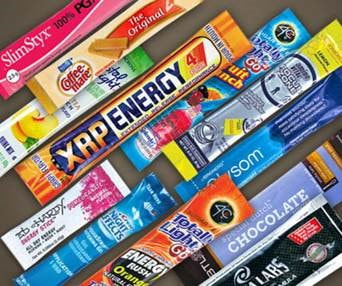 Stick Packs are ideal samples for use on onsert cards Stick Packs are ideal samples for use on onsert cards First introduced in 1996, stick packaging has gained popularity all over the world. Stick pack has opened a new market for portable, single-serve, packaging which allows producers to maximize marketing space and give consumers a more eco-friendly and easy to use alternative to traditional bulk-serve packaging. Stick packs have a fin seal which runs from top to bottom on the back of the pouch with a horizontal seal on either end. It’s called stick packaging because it’s long, narrow, cylindrical shape resembles a stick. Many consumer products including vitamin drinks, pre-workout, recover, electrolyte drinks, or instant coffee. Even cosmetic products can be packaged in stick packaging. Stick packs are ideal for trial or sample size products on an onsert card! Foil Pouch & Sachets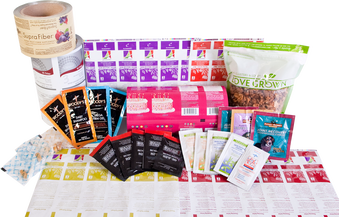 Foil Pouches can be made in different sizes to to maximize your exposure on an onsert card! Foil Pouches can be made in different sizes to to maximize your exposure on an onsert card! From shampoos to flower seeds, a foil pouch or sachet. Typically used as a single-serving quantity, these packages are durable and provide a great barrier to moisture and oxygen. Foil pouches provide your products with superior protection and can many times allow for substantially longer shelf life. There is a wide range of material options available for our sachet packaging and they are perfect for snacks, cosmetics, nutritional products, vitamins, medical products, hair care products supplements and more. Tube Samples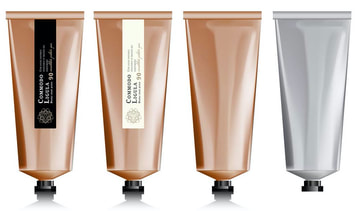 If you want to provide a sample that's resealable and has several uses, a Tube Sample package may be the best choice for you! If you want to provide a sample that's resealable and has several uses, a Tube Sample package may be the best choice for you! Samples of your liquid or cream products lend themselves to tube packaging. Mascara, lip gloss, lotions, deodorants, shampoos and other health and beauty product samples are often packaged in tubes. Depending on the dimensions of the tubes these are ideal items to put in a spine or head style onset card. Research on sampling has been going on for several decades and the results remain pretty consistent over time. Giving someone a sample of your product has always had a tremendous return on the investment. 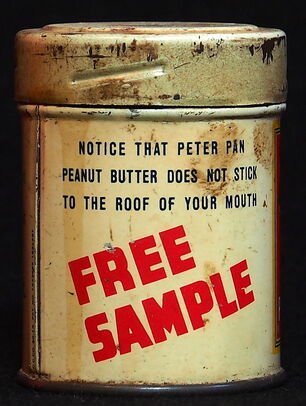 Cindy Johnson was a product sampling expert for CPG brands and now owns a company called Sampling Effectiveness Advisors. During Cindy's career with P&G, she worked with all brands in her role as Corporate Sampling Programs Manager. According to a report Cindy authored entitled "Why Sampling?" she found that 73% of consumers asked to evaluate eight marketing channels’ influence on their purchasing decisions said a product sample would persuade them to buy a new product, versus 19% for a TV ad. Based on a report from Sampling Effectiveness Advisor report:
"Most brands will consider product sampling only if they have a new product (or line extension) which affords them the opportunity to include sampling in the marketing plan. However product sampling can deliver strong results behind a number of different objectives. While the only reason for product sampling is to induce trial, sampling has been shown to be successful in delivering various objectives and under many situations. (Each of the examples assumes that trial objectives are met by chosing the right program, target, etc.)." What Can Product Sampling Do?Product sampling can:
According to IBR Packaging, a sampling program is a great solution for marketing your product to target consumers. Whether you're trying to attract new customers or get the word out about new products to your returning customers, creating samples can be just what you need. Incredibly-effective advertising. What better way to show off your product than by actually sending your products! According to the USPS, product samples reach 70 million consumers. Quarterly! Sending out your product sample is the best way to introduce your brand, introduce a new product or re-introduce your company to consumers. Get new customers. Sending out foil pouches or cosmetic packaging filled with your liquid products, gives people a chance to try what you are selling so they will want to purchase it. They may not commit to buying a full-size product in stores if they don’t know anything about it. By giving them a trial, they can try it for themselves and see why the product is worth their time. "A study found 50% of consumers who try a sample plan to purchase the product after." Customer retention. You may have customers out there that haven’t bought your product in a while, and maybe they forgotten why they love it. Send them sample packets and remind them what your company is all about! Encourage brand recognition. According to information on the USPS website, 92% of consumers have bought products after trying samples. Sending your brand name and information to customer homes helps them to remember it later while they are shopping. Get customers to your website. 84% of people involved in the USPS poll said they would probably log onto a website if they received a card driving them there, and also might sign up to receive samples. Skip the sign up part. Just send the samples on an onsert card! For More information on packaging for your product sample to attach to an insert card, contact: IBR Packaging
2225 E Belt Line Rd #105 Carrollton, TX 75006, USA Phone: 1-888-829-6509 Email: info@ibrpackaging.com Opinion Research Corporation found
As an industry-specific example, Euromonitor International reports that…
A Nielsen study determined the factors of a purchase that could sway consumers, too. This kind of information is important in determining which aspect of your product is better than the competitors’ in order to leverage that element as a selling point. Most importantly:
"Brands use many tactics to persuade consumers to buy their product, but there is one method that has proven its effectiveness time and time again–product sampling. For centuries, brands have been using free samples to get products directly into the hands of their consumers. It’s a true win-win for both sides, as consumers are thrilled to be receiving free product, and brands see an increase in sales as a result. Despite your personal experience of receiving free products from brands, you may be asking yourself the question: How can product sampling help my brand? Though the overarching concept may be clear, there are many layers and factors that go into the art of sampling. This extensive guide will define and elaborate on the concept of product sampling, and break down the different methods being used by brands around the world."
Samples are an efficient means to make consumers test new beauty products and influence their purchase decisions; all product categories are concerned, including makeup. In a recent study, The NPD Group found that one in five makeup users have received a makeup sample in the past year. Even the relatively new sample subscription programs are proving efficient. Making consumers pay for samples may pays off long-term for manufacturers and retailers. Actually, among women who subscribe to makeup sample subscription programs, 83 per cent were influenced to buy the full-sized product, according to the 2014 Makeup In-Depth Consumer Report, The NPD Group from The NPD Group. “The idea of offering samples has been around for some time, but sample subscription programs are a fresh way for manufacturers and retailers to engage with interested consumers and monetize their sample programs, while consumers discover brands or products they may not have been aware of previously,” said Karen Grant, Vice President and Global Beauty Industry Analyst, The NPD Group. “Women strive to find a makeup product that works for them, and when they do, that is the primary reason they become loyal to it.” Most women like to self-test products without pressure, and samples give them that ability. Take home samples are the second most popular makeup shopping preference, over things like salesperson explanation and personal consultation, but retailers are finding new ways to incorporate samples into the shopping, and even purchasing, experience. According to the market research firm, one in five makeup users have received a makeup sample in the past year, primarily from retailers (17%). Women under the age of 55, specifically the 18-34 year olds, are most likely to report receiving a makeup sample in the past year. Makeup samples strongly influence purchase decisions for about one-third of women, while over half are somewhat influenced by these samples. The 35-54 age group is the most likely to be influenced by samples, indicating opportunity that goes beyond the youngest generations. “Sample subscriptions are still relatively small in their reach, but their potential impact on the makeup industry is significant. Incorporating this method of product discovery into a marketing and sales strategy can uncover new consumers and expand on target audiences,” added Grant. Source: 2014 Makeup In-Depth Consumer Report, The NPD Group original article can be found at Premium Beauty New
"The best way to sell somebody your product is to put it in their hands". That been the adage of people selling products since the guy who invented the wheel and axle attached it to the dark behind basket. That being said, an advertiser or publisher still needs to know how statistically effective is it to provide a product sample to consumers. From January 18 to February 15, 2008, Arbitron and Edison Media Research conducted a national telephone survey. 1,857 respondents, ages 12 and older, were selected at random from Arbitron’s 2007 fall diarykeepers. In geographic areas where Arbitron diarykeepers were not available (representing 8% of the population), a supplemental sample was interviewed through random selection. The final report was titled: "Product Sampling Study" and it found product sampling reaches 70 million consumers every quarter, and one-third of customers who try a sample will buy the sampled product. Samples play a very significant factor in brand loyalty and awareness. More than 58% of those surveyed reported that they would buy the product again. Consumers were grouped into three categories: Acquisitions, or those who were new to the sampled product; Conversions, or those who had heard of the product but had never bought it; and Retentions, or those who had previously purchased the product. Fully 85% of the Retentions and 60% of the Conversions said they would in the future purchase the sampled product; samples encouraged nearly half (47%) of the Acquisitions to purchase the product in the future. "Will you plan to buy the product sampled in the future" Answer: "Yes" The study also found:
|
AuthorHere's where you will find some ideas on how to maximize your onsert marketing, some press releases, news stories and events. Archives
May 2020
Categories
All
|
HoursM-F
7am - 9pm CST |
Telephone+1-850-543-5493
|
|

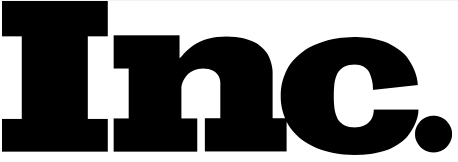

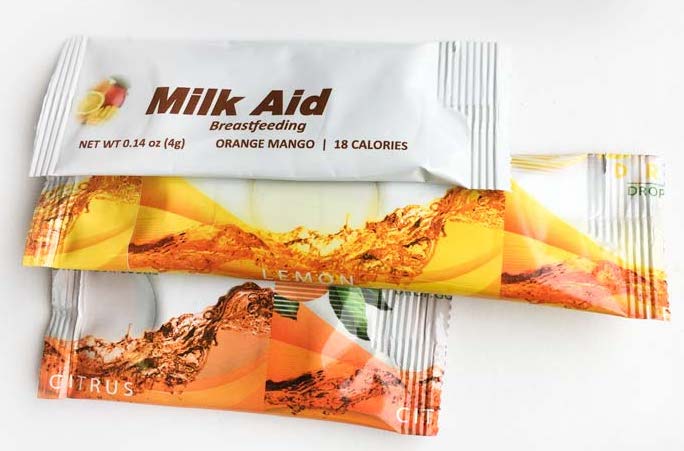
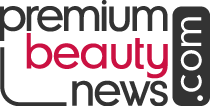
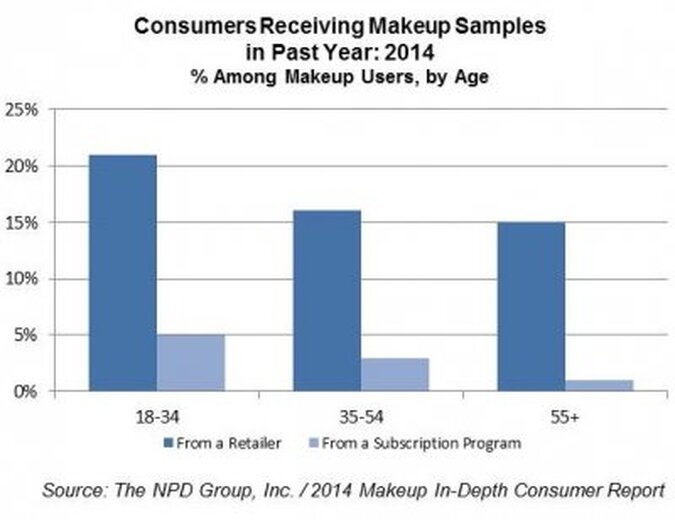
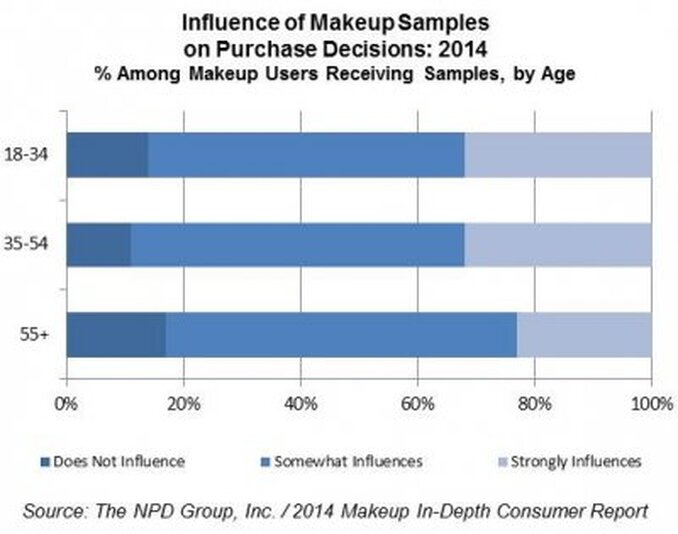
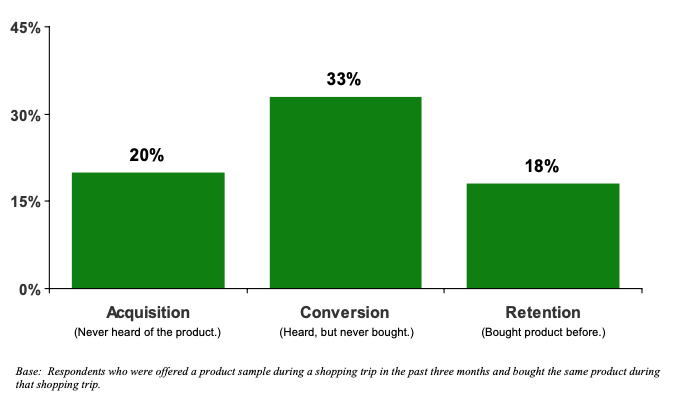
 RSS Feed
RSS Feed